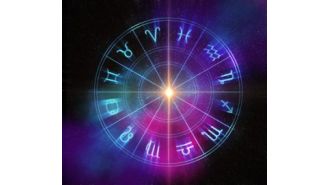Which cryptocurrencies are based on the ERC-20 standard?
There are a multitude of token standards on the Ethereum blockchain. However, ERC-20 tokens are the most popular. According to Etherscan , there are over 200,000 ERC-20 compliant tokens on the Ethereum mainnet. Among them, many of the top digital currencies according to their market capitalization have different purposes. erc20 token development company
- ChainLink Token (LINK), Chainlink is an ERC-677 token that inherits its functionality from the ERC-20 token standard. This token works with a blockchain exchange logic that is like a bridge between cryptocurrency smart contracts, data sources, APIs and payments in traditional bank accounts.
- Maker (MKR) is a decentralized autonomous organization (DAO)-based utility token that creates the stable cryptocurrency DAI on the Ethereum blockchain.
- Tether (USDT), a stable cryptocurrency that works on the ERC-20 protocol. That means the deposit address is an ETH address, and deposits and withdrawals happen on the ETH network.
When Ethereum switches to the Proof-of -Stake consensus mechanism in the Ethereum 2.0 update and implements sharding to resolve scalability issues, we can expect the number of projects based on the ERC-20 standard to grow exponentially. In addition, ETH 2.0 addresses solve transaction problems, so users will be able to transfer ERC-2' tokens almost instantly and with a lower commission.
Advantages of ERC-20 tokens
ERC-20 tokens are popular for a reason, there are several factors that make them attractive and they are as follows:
- Convenience. ERC-20 tokens are simple and easy to implement. That’s because Ethereum smart contracts are written with the Solidity programming language , similar to JavaScript. Additionally, developers can code smart contracts using the Vyper programming language, which is similar to Python .
- Flexibility for customization. Depending on business logic and user interactions, ERC-20 token creator are customizable, allowing features such as automatic gas top-up for future transactions, locking and unlocking a token, adding a central mint to modify tokens in circulation and more.
- A clear guide for developers. The ERC-20 standard gives developers an appropriate framework, which allows them to easily create new tokens instead of creating them from scratch.
- Token standardization. Ethereum provides specifications for tokens that include interaction rules between different tokens and rules for purchasing tokens. With a universal standard, users can transfer new tokens to a wallet and put them on an exchange at the same time.
- Liquidity. If Ethereum-based projects are active and interact with each other, you get more projects and more users on the Ethereum networ9Widely accepted. The ERC-20 standard, as well as the tokens, is recognized by most exchanges and wallets. This is thanks to the adaptable universal protocol for various exchanges. Also, its fungibility makes it excellent for trading applications.
- Eradication of fake tokens. All transactions must be approved, and full token provisioning eases the audit process by verifying that there is no duplicate token in circulation.
The ERC-20 could remain one of the most popular standards used by developers around the world. However, it is not perfect.
Limitations of ERC-20 tokens
Despite all its qualities, ERC-20 tokens have some flaws and problems that they cannot solve, among which we find the following aspects:
- Instability. Recently, the Ethereum blockchain has changed its consensus method from Proof of Work ( PoW ) to Proof of Stake using ETH 2.0. Even though ETH 2.0 aims to solve all the scalability issues, a lot of changes are still happening and it will take time. The process still needs to be completed. erc20 token development At this time, there may be instability in the system. Also, some tokens could be destroyed when used for smart contracts. Therefore, the ERC-233 was created to avoid the problem.
- Expensive gas commission. The ERC-20 relies on the Ethereum blockchain, and to complete each transaction, there will be a gas fee. Although the gas fee is parallel to the activities of the blockchain, the gas fees increase when there is a lot of traffic on the blockchain. Therefore, it is not sustainable in the long term.
- Transfer errors. In Ethereum there are two types of accounts. One is an externally owned account ( EOA ) controlled with private keys; and the other is a contract account ( contract account ), owned by the contract code. Sending tokens from one EOA account to another using the transfer function does not cause any problems, but transferring funds to a contract account results in an error that has already caused the loss of almost a million dollars.
- Slow transactions. The withdrawal and transactions are correlated with the Ethereum blockchain. When the network is congested, all transfers in ERC-20 will be slower. Although “sharding” is supposed to solve this problem, it is still at an early stage to fully adopt it on the Ethereum blockchain.
- irreversible transactions. There is no way to return funds if users send ERC-20 tokens to the wrong address and the tokens remain forever trapped in contracts. The same happens with the tokens that hackers steal, the famous DAO hack is one of the most striking examples.
- Very low entry criteria. Critics argue that it is too easy to create a token without any apparent purpose or goal. As a result, developers can easily exploit policies to develop initial coin and token offerings with projects that do not add any value.
Many solutions aim to overcome the technical problems of the standard. But most of it is still a small superficial solution without a detailed explanation. Investors should therefore take this into account when evaluating an ERC-20 project.
Alternatives to ERC-20 tokens
There are other ERC token standards besides ERC-20. Although they may have similar protocols, they have a different purpose. Let’s take a look at the ERC-721, for example.
ERC-721 tokens are not fungible. This means that each token is unique and special to protect its differentiated value. Functions indicate the value they represent. For example, Ethereum DApp (Cryptokitties) defines its value through fixed limits that preserve its scarcity. This type of token helps prevent counterfeiting and increases confidence in ownership of an investment.
The ERC-777 is considered an upgrade to the ERC-20. Although it has functionalities similar to the ERC-20, it stands out because it offers the option to create or delete a token and, eventually, speed up the transfer process. It is backwards compatible with proxy contracts and wallets without the need to redeploy.
Another alternative is the ERC-223 . It is mainly used to counter the scenario of an irreversible transaction to a smart contract with ERC-20 tokens. Notifies users to cancel a transaction when a transfer to a smart contract is triggered without a purpose. However, the gas fee is unavoidable and is only accepted by a limited number of wallets.






